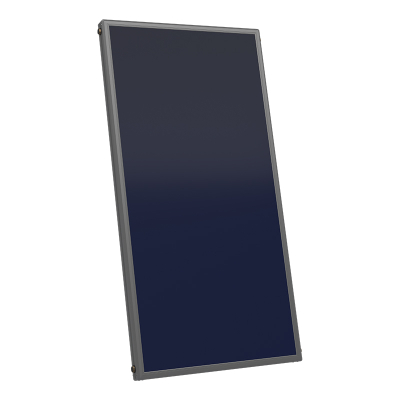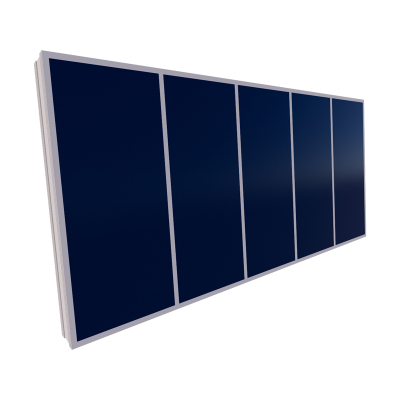How PVT Solar Systems Work With Heat Pumps for Maximum Efficiency
How PVT Solar Systems Work With Heat Pumps for Maximum Efficiency
Struggling with high heating and electricity bills in your commercial building? A hybrid PVT + heat pump system might be your smartest energy move yet.
Energy-intensive buildings face rising utility costs and increasing pressure to reduce carbon emissions. While solar PV can offset electricity usage, and heat pumps offer efficient thermal energy, combining them using PVT solar panels unlocks a new level of efficiency and cost savings.
PVT and heat pump systems integrate photovoltaic thermal hybrid solar collectors with either brine-to-water or air-source heat pumps. This setup generates electricity and captures low-grade heat, which feeds the heat pump — boosting its performance and reducing fossil energy demand.
Let’s take a closer look at how these two technologies work together and why they’re ideal for modern commercial and industrial buildings.
How do PVT panels work with a heat pump?
PVT (Photovoltaic Thermal) panels generate electricity from sunlight like conventional PV modules but also collect heat via a fluid-filled absorber behind the solar cells. This heat is then transferred to a circulating fluid, typically water or glycol.
In a combined system, this fluid feeds into a heat pump's evaporator circuit, either directly or via a buffer tank. Since the incoming fluid is already warmed by the sun, the heat pump requires less input energy to reach desired heating temperatures.
That means:
Higher system COP (Coefficient of Performance)
Improved PV cell efficiency due to panel cooling
Year-round solar thermal usage, even in cooler climates
Are PVT systems effective in winter with heat pumps?
Yes — even in cold weather, PVT systems remain effective because heat pumps only need low-temperature heat to function. Unlike traditional solar thermal collectors that drop in efficiency in winter, PVT panels:
Still produce electricity on cloudy days
Still deliver 10–25°C fluid temperatures in mild sunlight
Can draw ambient heat even from reflected or diffused radiation
In countries like Germany and the Netherlands, PVT heat pump systems are now used as the sole heat source in well-insulated buildings year-round.
What type of heat pump works best with PVT panels?
The ideal match is usually a brine-to-water (ground-source) heat pump or a specially designed solar-assisted heat pump. These systems operate efficiently with input temperatures between 10–30°C — which matches well with the thermal output of PVT collectors.
System types:
Brine-to-water (GSHP): Uses PVT loop instead of (or alongside) ground boreholes
Air-source (ASHP): Can use PVT as pre-heating for intake air or water
Dual-source heat pumps: Switch between ground, PVT, and air inputs for optimal performance
Some manufacturers like Triple Solar and DualSun offer fully integrated solutions designed for PVT + heat pump synergy.
What are the benefits of combining PVT with a heat pump?
The hybrid system creates a closed-loop, dual-output solar energy plant on your roof. Key benefits include:
Up to 70% total system efficiency (vs. 20% for standalone PV)
Improved ROI — one system produces two energy types
Reduced dependence on gas/oil boilers
Lower electricity use for heat pumps
Space efficiency — one panel footprint for two purposes
Lower carbon emissions = easier ESG reporting
Businesses with high hot water demand — like hotels, hospitals, laundries, and offices — can cut heating costs by up to 40% with a properly integrated system.
What is a solar-assisted heat pump system?
A solar-assisted heat pump is any system where solar energy (thermal or electric) reduces the energy input needed by the heat pump. PVT panels are ideal for this because they provide both:
Direct electricity to power the heat pump's compressor
Low-temperature fluid to act as a heat source
By preheating the working fluid, the heat pump works less and lasts longer. Some systems even use the electricity to run auxiliary components like fans and controls.
Can hybrid solar systems replace gas boilers in buildings?
Yes — in many cases, a properly designed PVT + heat pump system can fully cover a building’s hot water and heating load, especially when paired with:
Thermal storage tanks (buffer tanks)
Low-temperature distribution systems (like underfloor heating)
Good insulation and airtight building envelopes
In retrofit projects, PVT systems can also act as a **transition technology** — reducing gas usage while preparing the building for eventual electrification.
How efficient are photovoltaic thermal hybrid solar collectors?
Modern PVT panels can reach:
Electrical efficiency: 16–20% (similar to mono PV)
Thermal efficiency: 40–50% (depending on system design)
This results in **total exergy output of 60–70%**, far beyond what standalone PV or solar thermal can achieve. Additionally, the solar panel cooling technology improves PV lifespan and output stability over time.
Conclusion: A smarter way to power and heat your building
Combining PVT solar collectors with heat pumps turns your building into an energy-efficient powerhouse. The result is lower costs, lower carbon, and higher independence — all from the same square meter of roof space.
Looking to future-proof your energy system? It’s time to consider hybrid solar energy systems with PVT + heat pump integration.




